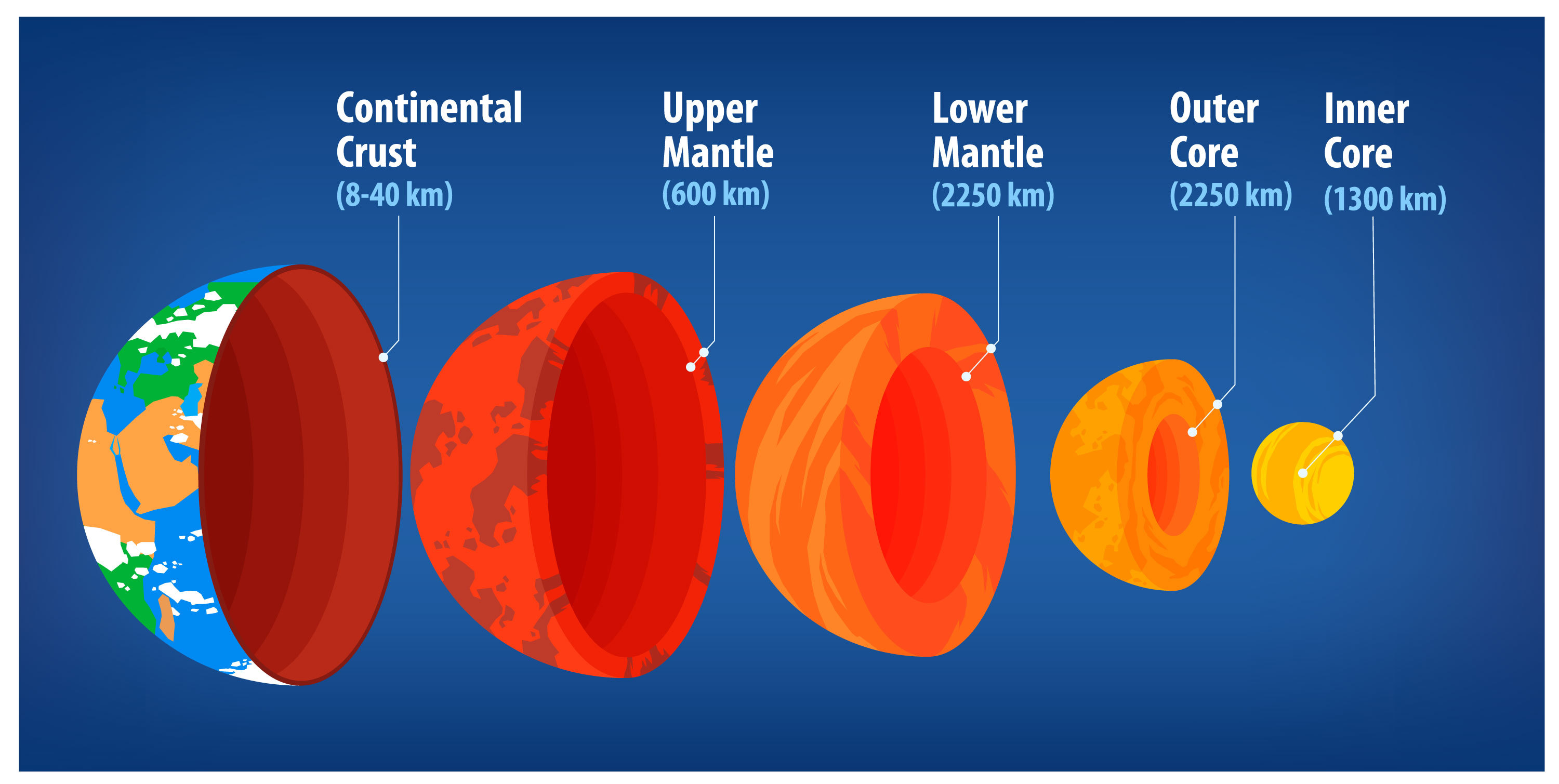The Earth’s innermost geological layer is a solid metallic ball around 2,400 kilometers (1,500 miles) across. We’ve never sampled it – just getting to the mantle is a challenge and then there are two more layers to go – but we know something of its composition and physical conditions from the way seismic waves pass through.
Among the things we have learned about the inner core is that, at its surface, it's 5,700-6,200 Kelvin (9,800-10,754 degrees Fahrenheit), depending on which estimate you use. Coincidentally, the lower figure happens to be the same as the average on the surface of the Sun and much hotter than sunspots. We also know that, in contrast to the outer core, the inner core is solid or very close to it. That may seem like a contradiction, but the explanation is actually very simple.
The surface of the Sun is plasma (like gas but highly ionized) not just because it’s mostly very hot hydrogen, but because it is exposed to the space. The inner core sits under the vast weight of the outer core, mantle, and crust. The pressure of all that pushing down upon it is around 350 gigapascals, or more than 3 million times atmospheric pressure at sea level.
That’s enough to turn a mix of iron with some nickel and other elements from liquid to solid. Just as water boils at much lower temperatures on the top of a mountain, because air pressure there is lower, high pressures can raise the temperature at which a substance melts.
Indeed, the way we know the temperature at the boundary between the liquid outer core and the solid inner one is by working out the pressure at that point, and estimating how hot the core’s metals can be while still being solid. Just above the boundary, the pressure is slightly lower, and the same material turns to liquid.
We’re not used to dealing with pressures like this, obviously, so temperature estimates extrapolate a bit from what we do know. That’s why there’s the variation in estimates of the temperature, but when you’re dealing with figures so far out of our range of experience a 10 percent deviation probably doesn’t change a lot.

The core is slowly cooling down as the concentration of radioactive elements that heat it drops, so it is thought the inner core is slowly growing, since at lower temperatures parts of the outer core solidify.
Ah, but is it really solid?
Vibrations don’t travel very differently between a solid object and an extremely viscous liquid. Indeed, the difference is so small it’s not clear our measurements of the way seismic waves from earthquakes pass through the core can identify if the core is truly solid or not. If that seems surprising, consider that materials scientists debated for decades whether the glass in your windows is a solid or a super-cooled liquid, and we can touch those.
If the inner core really is liquid, its viscosity is crazy high. One estimate puts it at a billion times higher than pitch. You can get a feel for what that means by watching the world’s slowest experiment, but be warned, it makes watching grass grow look like a fast-paced sport.
If the inner core is a very, very slow-moving liquid there could be convection going on within that might add slightly to the planet’s magnetic field, but the vast bulk of that is coming from the outer core. Viscosity might also explain why waves take longer to travel through the core from an earthquake near the equator than from pole to pole.




